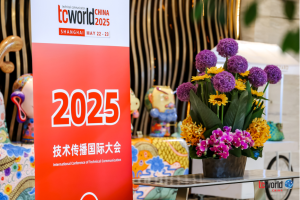Understanding Arabic to English Translation
The process of translating documents from Arabic to English involves a complex interplay of linguistic, cultural, and technical elements. Comprehending this process and its significance is crucial for individuals, businesses, educational institutions, and other entities that often rely on accurate Arabic to English document translation.
Importance of Arabic to English Translation
In an increasingly globalized world, the need for effective interlingual communication is paramount. Arabic to English translation plays a vital role in this context, enabling cross-cultural communication, international business transactions, academic research, and more.
Whether it's translating legal documents, medical records, business contracts, educational material, or tourism brochures, Arabic to English translation services are essential for conveying accurate information and ensuring mutual understanding. For more details on available services, visit our page on arabic to english translation.
Challenges in Arabic to English Translation
Despite its importance, Arabic to English document translation is fraught with challenges. One of the primary difficulties lies in the morphological complexity of the Arabic language, which requires algorithms and techniques specifically designed to handle this complexity.
Additionally, cultural differences, idiomatic expressions, and variances in dialects and writing systems can further complicate the translation process. Ensuring the accuracy, fluency, and preservation of the original meaning in the translated document is a complex task that requires a high level of expertise and understanding of both languages.
Despite these challenges, advancements in technology, particularly in machine translation systems, have greatly improved the accuracy and efficiency of Arabic to English document translation (Source). For a deeper understanding of these advancements, explore our guide on arabic to english translator.
By identifying and understanding these challenges, translation services can continue to improve, offering more accurate and efficient solutions for Arabic to English document translation. With the right strategies and resources, these challenges can be effectively addressed, paving the way for flawless communication between Arabic and English speakers.
Technology and Arabic to English Translation
Technological advancements have remarkably transformed the landscape of Arabic to English document translation, making it more accurate, efficient and accessible.
Role of Machine Translation Systems
Machine translation systems have played a pivotal role in enhancing the accuracy and efficiency of Arabic to English document translation (Source). These systems, powered by complex algorithms and vast linguistic databases, can translate large volumes of text in a fraction of the time it would take a human translator.
While they may not always capture the subtleties of human language and cultural nuances as effectively as a human translator, they provide a viable solution for quick, preliminary translations. For instance, they can be used for translating emails, web pages, and other non-critical business documents.
Several translation software options, such as Pairaphrase and SYSTRAN's Arabic translation software, offer advanced translation features and support a wide range of text document types, making them suitable for various translation needs.
Benefits of Neural Machine Translation
In recent years, Neural Machine Translation (NMT) models have shown promising results in Arabic to English translation. These models, which are based on artificial neural networks, have been found to achieve higher levels of fluency and accuracy compared to traditional statistical machine translation (SMT) models.
One of the key advantages of NMT models is their ability to consider the broader context of a sentence, rather than translating it word by word. This results in translations that are not only more accurate but also more natural and fluent.
Furthermore, NMT models can be trained to specialize in specific domains or language pairs, further improving their performance. For example, SYSTRAN's Pure Neural Cloud Arabic Translator offers improved translation quality and supports translation between English and Arabic, as well as other popular language pairs.
The integration of machine translation systems and neural machine translation models is revolutionizing the field of Arabic to English document translation. However, it's important to remember that while these technologies can expedite and streamline the translation process, they should be used in conjunction with human expertise to ensure the highest level of accuracy and cultural relevance. For more information on Arabic to English translation services, visit our website.
Evaluating Translation Quality
Quality assurance is a paramount aspect of Arabic to English document translation. The evaluation process, however, can be subjective and challenging due to factors such as fluency, accuracy, and preservation of the original meaning.
Factors Affecting Translation Quality
The quality of translation projects is critical for maintaining the reputation of a company and its translators. Clients trust translators to mirror the original document and transmit the intended messages into the target languages.
Several factors can affect the quality of translations, including:
- Fluency: Translations should read naturally in the target language, with appropriate use of grammar, syntax, and punctuation.
- Accuracy: The translator must accurately represent the ideas, facts, and nuances in the source text without adding or omitting any information.
- Preservation of meaning: The translation should capture the same meaning and tone as the original text, taking into account cultural differences and idiomatic expressions.
- Consistency: Consistency in terminology and style is crucial, especially in long or complex texts.
- Formatting: The layout and formatting of the translated document should mirror the original as closely as possible.
Translation Quality Standards
In addition to these factors, translation projects also undergo stages such as editing, revising, proofreading, review, and final copy, along with other quality control measures, to ensure a mirror image of the original document.
Certain standards guide translation quality. For instance, the European Union of Associations of Translation Companies (EUATC) has established EN 15038, a translation industry-specific quality standard implemented throughout Europe. This standard sets the criteria for service providers regarding human and technical resources, quality and project management, the contractual framework, and service procedures.
| Quality Standard | Description |
|---|---|
| EN 15038 | A European quality standard that sets the criteria for service providers regarding human and technical resources, quality and project management, the contractual framework, and service procedures. |
Investing in a translator or a translation service that adheres to these standards and implements rigorous quality control measures can ensure the accuracy and quality of your Arabic to English document translations. It's essential to prioritize these aspects to maintain the integrity and effectiveness of the translated documents.
Specialized Document Translation
When it comes to Arabic to English document translation, it's important to understand that not all documents are created equal. Certain types of documents, such as technical and medical ones, require specialized knowledge and expertise in order to be accurately translated. In this section, we will explore the unique requirements and considerations of these two types of specialized document translation.
Technical Document Translation
Technical documents, such as installation and maintenance manuals for specialized equipment, target specialist audiences instead of the general public. Therefore, technical translation requires more than just language proficiency; it also requires a deep understanding of the subject matter and industry-specific terminology.
Technical translators must have similar educational and professional backgrounds as the target audience in order to accurately translate technical documents. Without subject matter expertise, even correct translation of individual words can lead to major mistakes and severe consequences, such as the rejection of a patent application (source).
The use of machine translation tools for technical document translation can be risky, as they may not accurately capture the intended meaning and may result in errors. Therefore, working with professional translators who are native speakers of the target language and have expertise in the subject matter is crucial for high-quality and accurate Arabic to English document translation.
Arabic is one of the most commonly translated languages, making Arabic to English document translation a crucial service, especially for technical documents.
Medical Document Translation
Similar to technical document translation, medical document translation also requires a deep understanding of the subject matter, along with proficiency in the language. Ambiguities and nuances in language become more pronounced when translating complex scientific language and medical terminology, leading to potential mistakes and misunderstandings.
In order to ensure the accuracy and quality of medical document translation, it's important to work with professional translators who have expertise in the medical field. This will ensure that the translated document is not only grammatically correct but also accurate in terms of medical terminology and concepts.
By understanding the unique requirements and considerations of specialized document translation, individuals and organizations can make more informed decisions when choosing a translation service. Whether it's a technical or medical document, ensuring accurate and high-quality translation is crucial for effective communication and understanding.
Choosing the Right Translation Service
When it comes to Arabic to English document translation, selecting the right service or software is paramount. The quality, accuracy, and reliability of the translation can significantly impact the effectiveness of the communication.
Features of Quality Translation Services
When considering a translation service, there are several key features to look for:
- Expert Translators: The translators should be native speakers of both Arabic and English to ensure accurate and culturally appropriate translations.
- Specialization: The service should have expertise in translating various types of documents, such as legal agreements, business contracts, technical manuals, and medical reports.
- Quality Control: The service should have a stringent quality control process, involving initial translation, editing, proofreading, and final quality assurance checks.
- Confidentiality: The service should guarantee the confidentiality and privacy of the translated content.
- Customer Satisfaction: The service should prioritize customer satisfaction, with quick turnaround times and responsive customer support.
- Value for Money: The service should offer competitive pricing, with transparent and upfront cost estimates.
One such service that checks all these boxes is Language Department, offering professional Arabic to English document translation services. For more details on their offerings, visit this link.
Reviewing Translation Software Options
For those who prefer to use software for Arabic to English translation, there are several options available. Here, we discuss two popular choices: Pairaphrase and SYSTRAN.
Pairaphrase is a highly rated software for English to Arabic document translation, offering a user-friendly interface, advanced translation features, and supports various file types. It also includes a collaborative feature for team collaborations and a secure cloud-based platform for document translation (Pairaphrase).
| Key Features of Pairaphrase | Description |
|---|---|
| User-friendly interface | Easy-to-use features |
| Collaboration | Allows multiple users to work on a project |
| File Type Support | Supports Word documents, PDFs, presentations, spreadsheets, etc. |
| Translation Memory Technology | Ensures consistency and accuracy in translation |
| Secure Cloud-Based Platform | Ensures confidentiality and privacy of content |
SYSTRAN offers different versions of Arabic translation software catering to home users translating basic documents and professionals requiring advanced tools. It can translate any type of text document, including Microsoft Word documents, emails, text, web pages, and supports translation between English and Arabic, as well as other popular language pairs.
| Key Features of SYSTRAN | Description |
|---|---|
| Modern Standard Written Arabic | Used in broadcasting, media, print, and official documents |
| Document Translation | Supports Word documents, emails, text, web pages |
| Tools | Dictionary builder, API, and supports Microsoft Office software |
| Versions | Essentials Translator for home users and Professional Translator for advanced users |
In conclusion, the choice between a translation service and software depends on your particular needs and preferences. Whether it's a certified translation or an online translation, ensuring the quality and accuracy of the translation is crucial.
Ensuring Successful Translation Projects
Achieving successful Arabic to English document translation projects involves various factors. These include engaging subject matter experts and fostering effective communication and collaboration among all parties involved.
The Role of Subject Matter Experts
In the realm of Arabic to English translation, the role of subject matter experts cannot be overstated. Technical translators, for example, must have similar educational and professional backgrounds as the target audience in order to accurately translate technical documents.
Knowing the language is no longer sufficient for technical translation; these translators must fully understand the content of the documents and possess subject matter expertise. Without such expertise, even correct translation of individual words can lead to major mistakes and severe consequences, such as the rejection of a patent application (source).
Working with professional translators who are native speakers of the target language and have expertise in the subject matter is crucial for high-quality and accurate Arabic to English document translation (Blend).
Importance of Communication and Collaboration
In order to achieve the highest possible quality in Arabic to English document translation projects, effective communication and collaboration are essential. Clients trust translators to mirror the original document and transmit the intended messages into the target languages (source).
Translation involves stages such as editing, revising, proofreading, review, and final copy, as well as other quality control measures to ensure a mirror image of the original document. The European Union of Associations of Translation Companies (EUATC) established EN 15038, a translation industry-specific quality standard implemented throughout Europe (source).
Delivery of high-quality document translation services is a mark of professionalism in the translation industry. Accurate translation requires a deep understanding of the cultural nuances and idiomatic expressions of both the source and target languages.
Translators should have expertise in the subject matter of the document being translated in order to accurately convey the meaning and context. This makes communication and collaboration vital aspects for any Arabic to English document translation project.




![[Regulatory Update] Egypt Imposes New Certification Rules for Manual Translations [Regulatory Update] Egypt Imposes New Certification Rules for Manual Translations](https://maxsuntranslation.com/wp-content/uploads/2025/06/Egypt-Imposes-New-Certification-Rules-for-Manual-Translations-1-300x109.png)

